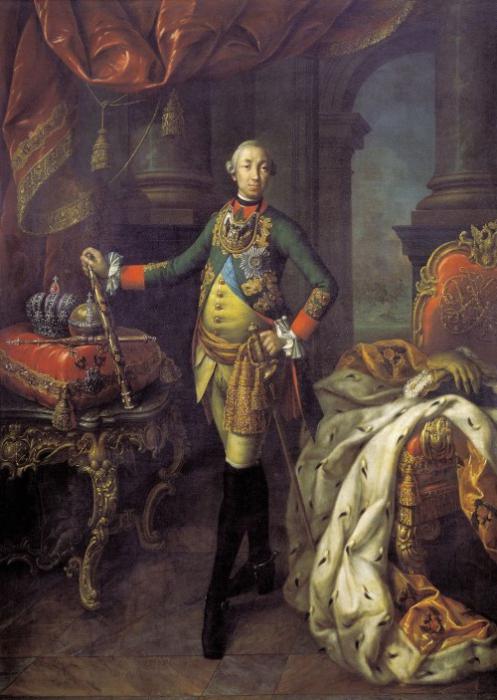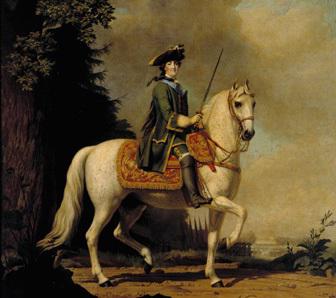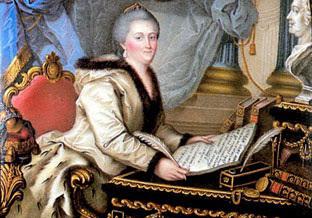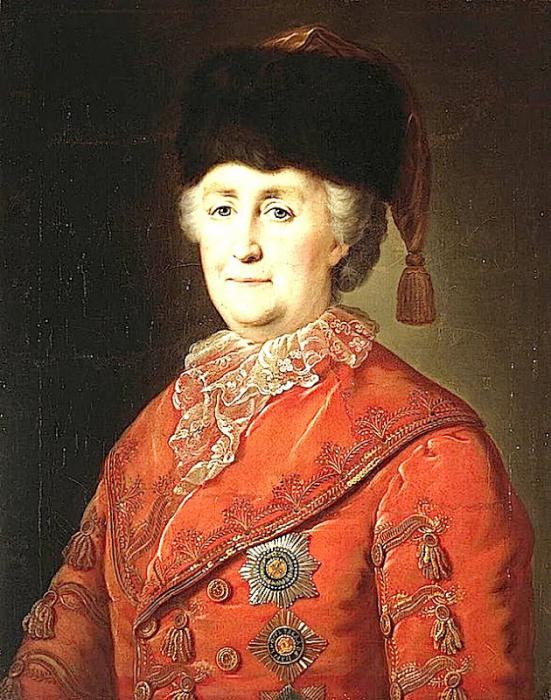What do we know about the Russian empress Catherine the Great? In the memory of descendants, facts that have little relevance to public policy often come up . Catherine was a very big fan of court balls, exquisite toilets. She was always followed by a string of gentlemen. The life of her favorites, once connected with her love bonds, went down in history. Meanwhile, the Russian Empress was, above all, a smart, bright, extraordinary personality and a talented organizer. It is worth noting that under her system of government was transformed for the first time after the reign of Peter the Great. Of great interest today are the reforms of Catherine 2. To summarize them, however, it is unlikely to succeed. On the whole, all its political changes fit into the mainstream of the theory called enlightened absolutism. This trend in the XVIII century gained particular popularity. Reforms of Catherine 2 have touched many spheres of state and public life. The table “Transformations within the country,” given below, clearly shows this.
The childhood and education of Princess Fike
Sophia Frederick Augustus Anhalt-Zerbst - that was the full name of the future Russian empress. She was born in the spring of 1729 in a small German town called Stettin (now it is the territory of Poland). Her father was in the service of the Prussian king. He was a conceited man. At one time, he was first a regimental commander, then a commandant, and then the governor of his native city. The mother of the future empress was royal blood. She was a cousin to Peter III, the future husband of her daughter. Sophia, or, as her relatives called her, Fike, received a home education.
She studied French, Italian, English, geography, history, theology, danced and played music. The girl had a cheerful disposition, was restless, was friends with the boys. Parents were unhappy with her behavior. The Fike family was not rich. But her mother dreamed of profitably marrying her daughter. Soon her dreams were realized.
Marriage to the heir to the throne of Russia
In 1744, the Tserbst princess Fike was invited along with her mother to Russia to the royal court to marry the future Russian emperor Peter III, who was her second cousin.

The sixteen-year-old bride was soon introduced to Elizaveta Petrovna, who, in an effort to secure the right of the Romanovs to the succession to the throne, hoped to marry her unclean nephew. The Russian empress believed that the pretty and graceful Sofia would be able to distract Peter from his childhood amusements with puppies and toys. As soon as Fike was in Russia, she eagerly began to study the Russian language, court etiquette and the Orthodox law of God. The wedding was scheduled for August 25, 1745. The day before, Sofia converted to Orthodoxy and received the name of Ekaterina Alekseevna. On the wedding day, at 6 a.m., the princess was taken to the chambers of Elizabeth Petrovna, where she was dressed and combed. The wedding ceremony was held in the Kazan Church. It is noteworthy that 17 years after this, here the Life Guards will swear allegiance to their new Empress Catherine Alekseevna. After the wedding, a large ball and banquet was given at the royal court, where Fike was forced to dance with an endless series of elderly nobles. Immediately after the wedding, it became clear that the newly-made husband was not going to fulfill his conjugal duties. Peter spent all his time in games with tin soldiers and cardboard locks. He turned his matrimonial bedroom into a kennel for hunting dogs. It was obvious that this undergrowth was not able to rule the state. Meanwhile, Russia needed internal reforms. Catherine 2, as such, did not yet exist. And the close associates of the royal court expected that everything would be limited to the role of the wife of the emperor and the mother of his children. How much they were wrong.
Catherine's ascension to the Russian throne
The current Empress Elizaveta Petrovna faded away every day, her health was very poor. And the relationship of the crowned spouses did not work out. Peter openly lived with his mistress and talked about the desire to marry her. Catherine herself soon also became interested in the 26-year-old junk camera Sergey Saltykov. A few months later, Fike gave birth to a son, who was named Paul. There were rumors circulating at the court that his father was Catherine's lover. Despite all this, Empress Elizabeth Petrovna proclaimed the boy the second successor to the throne. At this time, Russia, in alliance with Austria and France, fought with Prussia, where it won one victory after another. This pleased everyone except the infantile Peter, who considered King of Prussia Frederick II an unsurpassed military genius. It was clear that in the event of his accession to the throne, Russia will conclude a humiliating peace with Prussia, having lost everything that it gained during the war. Soon it happened. Elizabeth died at Christmas in 1761. After that, Peter became the Russian emperor. In March 1762, he made peace with Prussia, which caused a lot of discontent in the ranks of the Russian army. This is what the associates of Catherine the Orlov brothers decided to use against Peter III, one of whom, Gregory, was her lover and the father of her last child. In the Kazan Church, Catherine passed the ceremony of anointing and taking the oath as the Empress of All Russia. The first to swear allegiance to her soldiers.

It happened on June 28, 1762. Then no one had ever imagined what the policy of Catherine 2 would be.
General information about the reign of the empress
A week after the events described, on July 6, Catherine received a letter from Orlov that her husband Peter, who wrote the abdication and exiled to Ropshu Manor, was killed. According to eyewitnesses, the new Empress rushed about, cried and shouted that her descendants would never forgive her. However, other sources indicate that she knew about the impending assassination attempt on her husband, since 2 days before his murder, doctor Paulsen was sent to him not with drugs, but with autopsy tools. Be that as it may, nobody began to dispute Catherine’s right to the throne. And today we can take stock of her 34-year reign. Historians often use the term enlightened absolutism to characterize her rule within the state. Adherents of this theory are convinced that a strong autocratic power must exist in the state, which will work for the benefit of all its citizens. Enlightened absolutism of Catherine 2 was expressed primarily in strengthening the bureaucratic apparatus, unification of the management system and centralization of the country. The empress believed that the vast territory of Russia and its harsh climate necessitate the emergence and prosperity of autocracy here. Schematically, we can depict the reforms of Catherine 2.
Table “Transformations within the country”
No. | Title | Provisions |
1 | Provincial Reform | Territories began to be divided into governorates and counties, the number of the former increased from 23 to 50. At the head of each province was a governor appointed by the Senate. |
2 | Judicial reform | The Senate has become the highest judicial authority. The nobles were judged by the Zemstvo court, the townspeople - magistrates, the peasants - reprisals. So-called soviet courts were created. |
3 | Secularization Reform | The monastery lands, together with the peasants who lived on them, were transferred to the College of Economy. |
4 | Senate Reform | The Senate became the highest court, was divided into 6 departments. |
5 | City reform | The urban reform of Catherine 2 consisted in the fact that the inhabitants of the cities were divided into 6 categories, each of which had its rights, duties and privileges |
6 | Police reform | Deanery Office has become a city police authority |
7 | Education reform | In the cities, public schools were created, supported by state treasury money. People of all classes could study in them. |
8 | Monetary reform | A loan office and the State Bank were formed. For the first time, bank notes were issued - paper money. |
As can be seen from the data in the table, the enlightened absolutism of Catherine 2 was fully manifested in these reforms. She strove to concentrate all state power in her hands and to ensure that all classes live in the country according to the special laws introduced by her.
The document "Punishment" - the concept of enlightened absolutism of Catherine 2
The empress, enthusiastically speaking about Montesquieu's works and adopting the basic principles of his theory, made an attempt to convene the so-called Stated Commission, the main purpose of which was to clarify the needs of the people for the necessary transformations within the state. The structure of this body was attended by 600 deputies from various classes. As a guiding document of this Commission, Catherine published “The Order”, which became, in fact, a theoretical justification for enlightened absolutism. It is known that he was almost completely rewritten from the works of Montesquieu, an ardent supporter of this theory. Catherine herself admitted that here she belongs to "in one place one line, one word."

This Commission lasted only a year and a half, and then was dissolved. Was this body called to carry out administrative reforms of Catherine 2? Maybe yes. But historians today agree that all the work of the Commission was aimed at creating a favorable image of the empress in Russia and abroad. It was this body that decided to award her the title of "Great."
Administrative reforms of Catherine 2
These innovations were legalized on November 7, 1775. The system of administrative division of the territory of Russia has changed. Previously, it was a three-link: provinces, provinces, counties. And now the areas of the state began to be divided only into governorates and counties. The governor general was at the head of several governorates. Viceroys, herald fiscals and refatgeys obeyed him. Treasury finances were managed by the Treasury Chamber with the support of the Accounts Chamber. At the head of each county was a captain. In a separate administrative unit, a city was allocated, at the head of which, instead of the governor, a city mayor was appointed.
Reform of the Senate of Catherine 2
This neoplasm was adopted by the empress on December 15, 1763. According to him, the Senate became the highest court. In addition, it was divided into 6 departments:
• the first - was in charge of all state and political affairs in St. Petersburg;
• the second - in court cases in St. Petersburg;
• the third - medicine, science, art, education, transport;
• the fourth - military naval and land affairs;
• fifth — by state and political affairs in Moscow;
• Sixth - in court cases in Moscow.
Reforms of the administration of Catherine 2 here were aimed at making the Senate an obedient instrument of autocratic power.
Economic reforms
The reign of the empress was characterized by the extensive development of the country's economy. Economic reforms of Catherine 2 touched the banking and monetary sectors, foreign trade.
During her reign, new credit institutions appeared (loan offices and the State Bank), and began to accept funds from the population for deposits. For the first time, bank notes were issued - paper money. The state under Catherine began to export abroad goods in large quantities, such as cast iron, sailing canvas, wood, hemp, bread. It is difficult to say whether the given reforms of Catherine 2 brought a positive result. It is unlikely to tell about this briefly. The massive
export of grain under its control led to the famine in 1780 in many regions of Russia. Cases of mass ruin of peasants became more frequent. Prices for bread have risen. The state treasury is empty. And
Russia 's
foreign debt exceeded 33 million rubles.
Education Innovations
But far from all the conversion of the empress had negative consequences. The reform of the education of Catherine 2 was begun in 1760. Schools began to open everywhere, which children from different classes could attend. Particular attention was paid to female education. In 1764, the Smolensk Institute of Noble Maidens was formed. In 1783, the Russian Academy opened, where eminent foreign scientists were invited. What else manifested the reform of the education of Catherine 2? The fact that in the provinces formed orders of public charity, which were in charge of the management of public schools, hospitals, shelters for the insane and sick, hospitals. In Moscow and St. Petersburg, houses were opened for street children who received upbringing and education in them.
Estates under Catherine 2
This transformation is still controversial among historians. Catherine's class reforms 2 consisted in the publication of two letters in 1785, one of which finally secured privileges for the nobility, and the other divided the urban population into 6 categories. The empress herself called these innovations "the crown of her activity." The "Charter to the Nobility" implied the following:
• this estate was exempted from cantonment of military units, from corporal punishment, from confiscation of property for criminal offenses;
• the nobility received the right to the bowels of the earth, the right to own land, the right to have estate institutions;
• these people were forbidden to hold elected posts if their income from estates was less than 100 rubles, and they also lost their suffrage if they did not have an officer rank.
What was the urban reform of Catherine 2? The Empress commanded to divide the population into 6 categories:
• urban inhabitants (homeowners);
• merchants of 3 guilds;
• artisans;
• nonresident and foreign merchants;
• eminent citizens (wealthy merchants, bankers, architects, painters, scientists, composers);
• Posadsky (without houses).
Regarding these innovations, we can say that the policy of Catherine 2 here contributed to a strong stratification of society into rich and poor. At the same time, the economic situation of some of the nobles worsened. Many of them could not enter the public service, not having the opportunity to purchase the necessary clothes and shoes. At the same time, a number of large nobles owned vast territories of the earth and hundreds of thousands of serfs.
Religious policy
What areas have the state reforms of Catherine 2 touched yet? This strong-willed woman tried to control absolutely everything in her state, including religion. In 1764, she issued a decree and deprived the church of land. Together with the peasants, these territories were transferred to the management of a certain College of Economy. Thus, the clergy became dependent on royal authority. In general, the empress tried to pursue a policy of religious tolerance. In the first years of her reign, persecution of the Old Believers ceased, Buddhism, Protestantism, and Judaism received state support.
Catherine 2 as a follower of the Enlightenment theory
The 34-year reign of the empress is filled with many conflicting events. The enlightened absolutism of Catherine 2, which she tried to preach among the nobility, was manifested in the “Order” she created, in the convocation of the Stated Commission, in estate reform, in administrative division of the territory of Russia, and in transformations in the field of education. True, all these reforms were limited. The estate system, the autocratic principle of government, serfdom remained unshakable. Catherine's relations with the French enlighteners (Voltaire, Diderot) deserve special attention.
She actively corresponded with them, exchanging ideas. They had a very high opinion of her. True, modern historians are convinced that these relations were purely sponsorship in nature. The empress often generously endowed her “friends”.
The results of the reign of the great empress
The time has come to characterize the reforms of Catherine 2 briefly and summarize her reign. She carried out many transformations, sometimes very controversial. The era of the empress is characterized by maximum enslavement of peasants, deprivation of their minimum rights. With her, a decree was issued banning the peasants from lodging a complaint against their landowner. Corruption flourished, and on an especially large scale. The empress herself set an example, generously endowing relatives and close associates of the court and appointing her favorites to important public posts. Not surprisingly, after several years of her reign, the country's treasury was empty. How did the reforms of Catherine 2 end? Briefly about this we can say this: a severe economic crisis and a complete collapse of the state financial system. Be that as it may, she actively participated in public life and loved Russia, which became her native.

We learned how the enlightened absolutism of Catherine 2 manifested itself during her reign, some of the provisions of which she was able to realize.